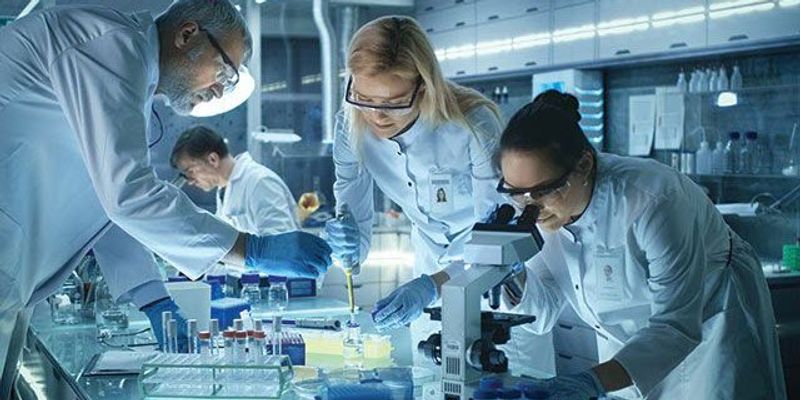The word “laboratory,” from the Latin “laborians,” is where the word “laboratory” first appeared. Perhaps a few of your lab mates have firsthand experience with what a lab is like?. The author will now define a laboratory at this stage. In general, a laboratory is a location where various activities, such as experiments or experiments, are carried out. It is connected to many other domains and branches of science. Below we will learn about the tools used in the laboratory:
· Microscope
A microscope is a scientific instrument used to observe items or objects that are small in size, often so small that it is challenging to see them with the unaided eye. With the aid of this tool, the thing will appear larger and observations can be made about it. Numerous people may already be familiar with the microscope as a standard laboratory tool. Naturally, the lab assistant finds it simpler to observe objects with a tiny size when they are being viewed under a microscope, and this tool is often found in lab equipment Malaysia.
· Analytical Scales
Similar to a scale in general, an analytical balance is a scale used to determine an object’s mass. However, analytical balances are dedicated to weighing very light things and have a more focused capability. One of the essential lab equipment for the pharmaceutical industry is the analytical scale. This is due to the crucial role analytical balances play in the process of measuring (weighing) a material. Of course, high-quality items are necessary to support the function of analytical balances, which are crucial in pharmaceutical laboratories. Currently, a number of different types of analytical balances come with an inbuilt calibration feature and a computer connector. When weighing substances or samples, laboratory staff may find it simpler if they choose a suitable analytical balance.
· Micropipette
A micropipette is a scientific tool used to precisely take or transfer tiny volumes of liquid. Actually, a micropipette performs the same task as a pipette in general, i.e., moving liquids or solutions, but with a different level of precision in the volume transmitted.
Different volume sizes are available for pipettes and micropipettes, some of which are both fixed volume and variable volume. The most popular volume measurements are 1 ml, 5 ml, and 10 ml. The micropipette’s primary use is as a tool for quantitative measurement and sample solution transfer. Students’ (laborers’) ability to do quantitative analysis of medicinal components using the volumetric method is typically checked while utilizing micropipettes.
· Spectrophotometer
A spectrophotometer is a device that measures a sample’s absorbance as a function of concentration to do both qualitative and quantitative analyses of a substance. As a crucial piece of equipment for pharmaceutical laboratories, the spectrophotometer is used. It is typically used to gauge how quickly a chemical or solution is absorbed in particular circumstances. Well, there are many different varieties of this spectrophotometer, including single beam, double beam, beam ratio, and dual beam models.
· HPLC
HPLC or High Performance Liquid Chromatography is one of the pharmaceutical laboratory tools commonly used to analyze samples in the form of liquids or solids that go through a preparation process first. The use of HPLC in pharmaceutical laboratories is usually oriented towards qualitative and quantitative analysis with UV detectors.

